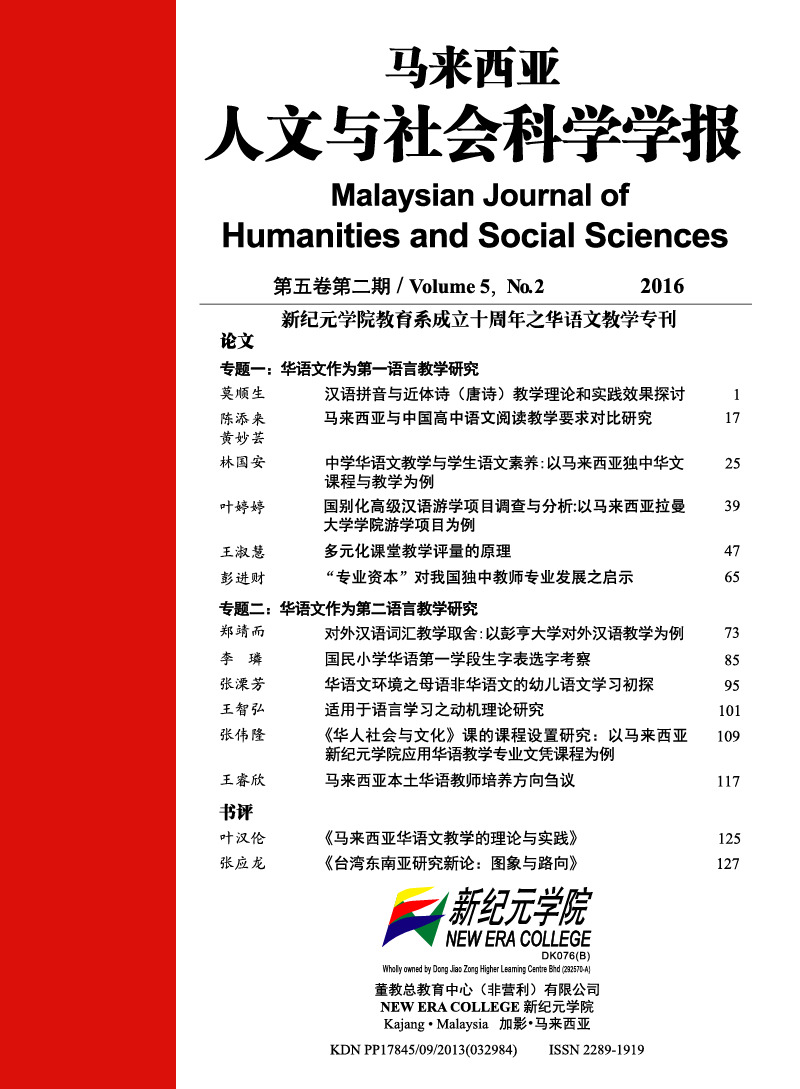国民小学华语第一学段生字表选字考察 A Study on the Selection of Chinese Characters for Chinese Language Class during the First Academic Session in National Primary Schools
Keywords:
国民小学、华语、生字表、第二语言教学, national primary schools, Chinese subj ect, Chinese characters, second language teachingAbstract
本文将国小华语第一学段生字表与两项参照——《汉字等级划分》和华小华文第一学段生字表——进行了比对,以考察国小华语第一学段生字表选字的合宜性。国小第一学段生字有12.22%不在《汉字等级划分》的初级水平内,有1.65%不在华小一和二年级生字表内,两者比例为7: 1 。均不属两大参照内的13个生字可考虑从国小第一学段生字表删去。本文最后总结了制定生字表的几点原则与考矗: l. 以具时效性和代表性的字表为依据; 2.定制形、音兼具的生字表; 3 .本土化原则的考量; 4.教学对象和场景的考量; 5.生字的构词能力。
The study focused on the conformance of Chinese characters for the Chinese language class during the first academic session in national primary schools. Therefore, the Chinese characters were compared to two references - The Graded Characters for the Application of Teaching Chinese to Speakers of Other Languages and Chinese characters for the Chinese language class during the first academic session in Chinese national-type primary schools. The findings show that 12.22 per cent of the Chinese characters in national primary schools are not found in The Graded Characters for the elementary level, and 1.65 per cent are non-existent at the level of Standards 1 and 2 in Chinese national-type primary schools, which contributes to the ratio of 7: l. The 13 characters not found in both references may be excluded from the national primary school syllabus. The study indicates that there are several principles and considerations in establishing the characters list for teaching materials. These include the choice of characters that are more current in use; the pronunciation should be included in the list; considerations of local relevance, the target groups and teaching enviromnents; and the ease with which the characters may be combined to form new phrases and words.




